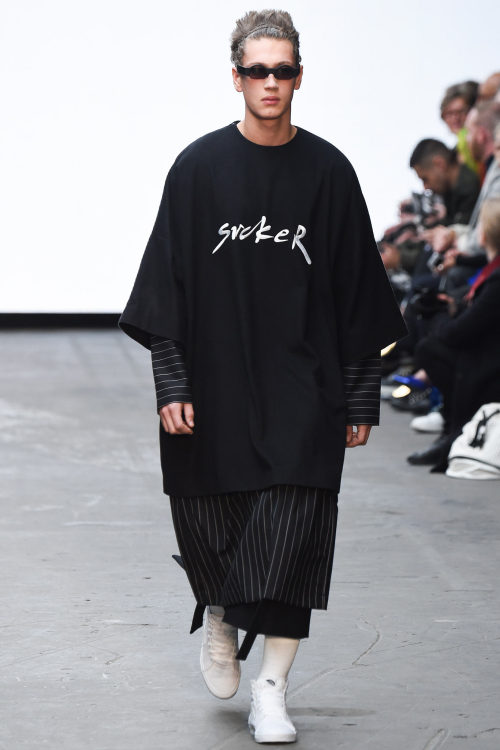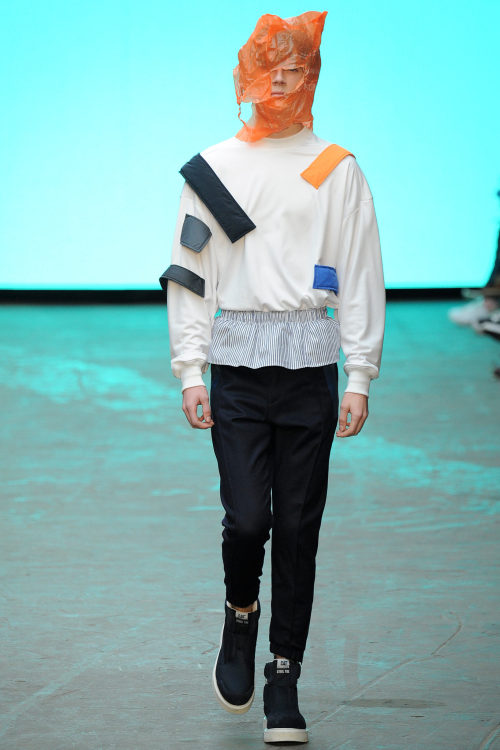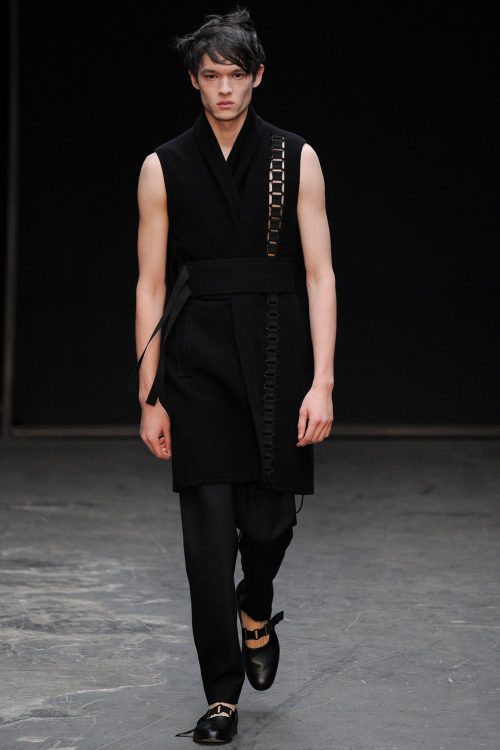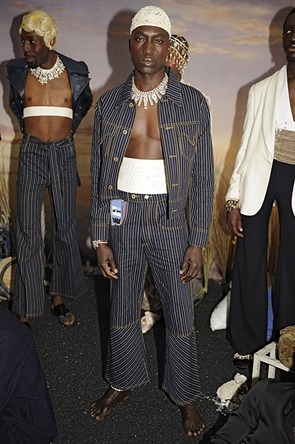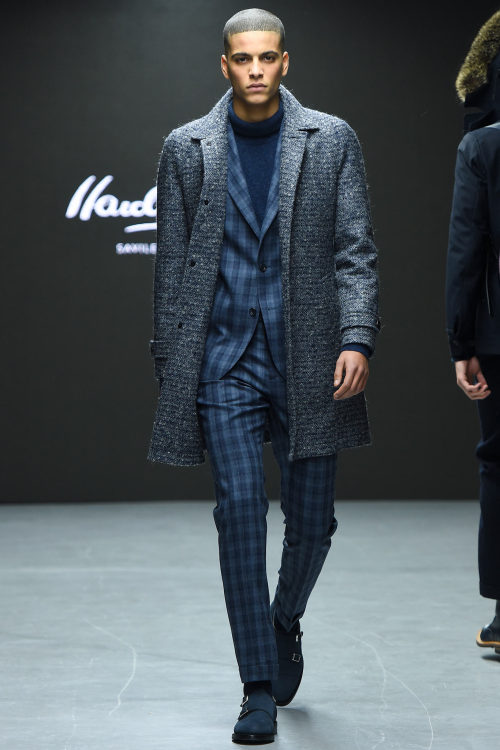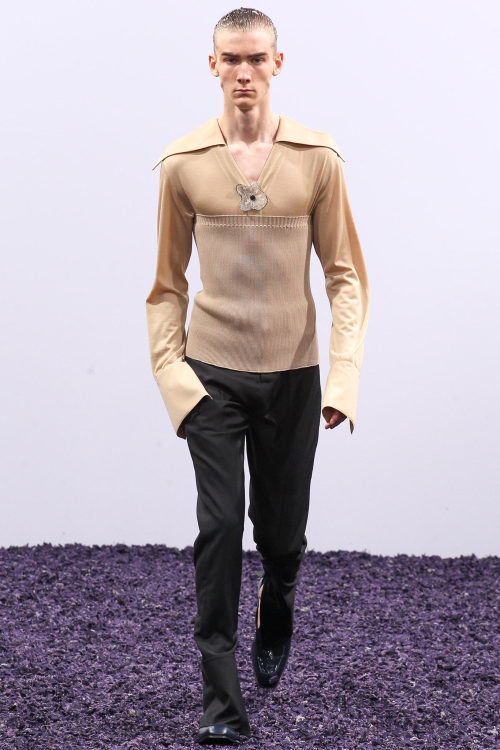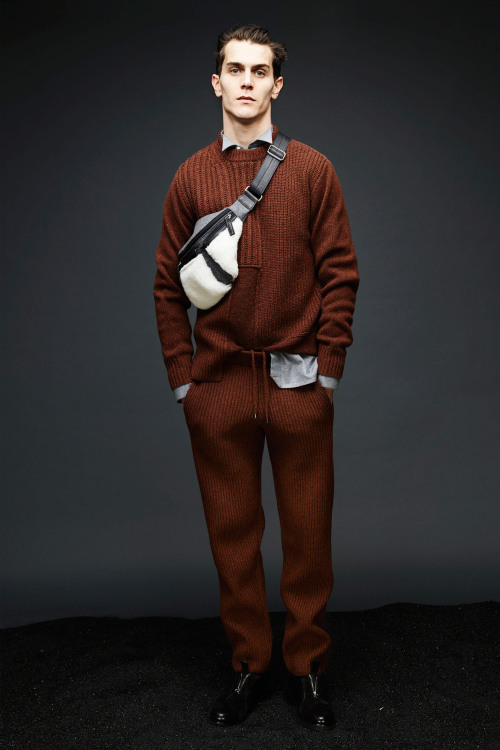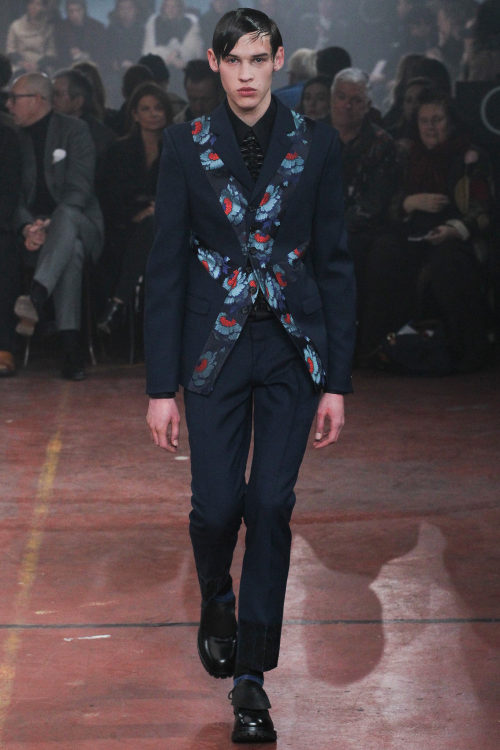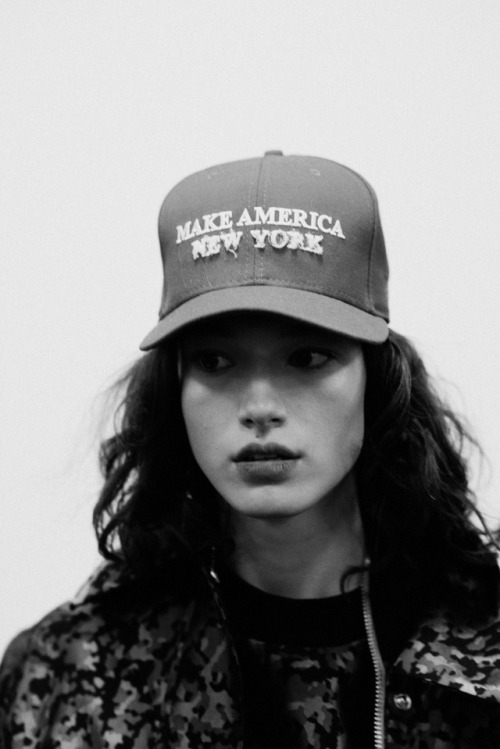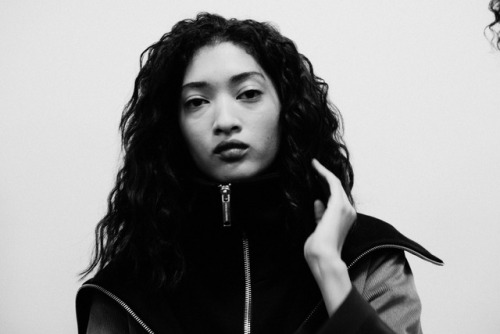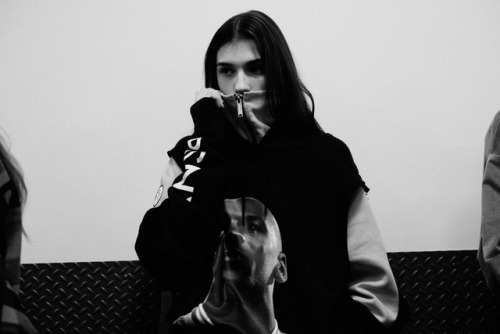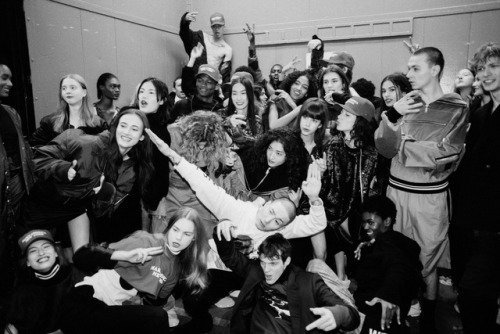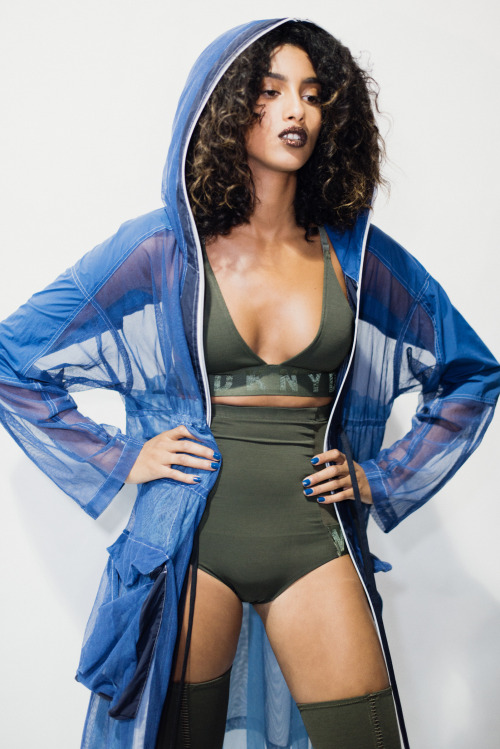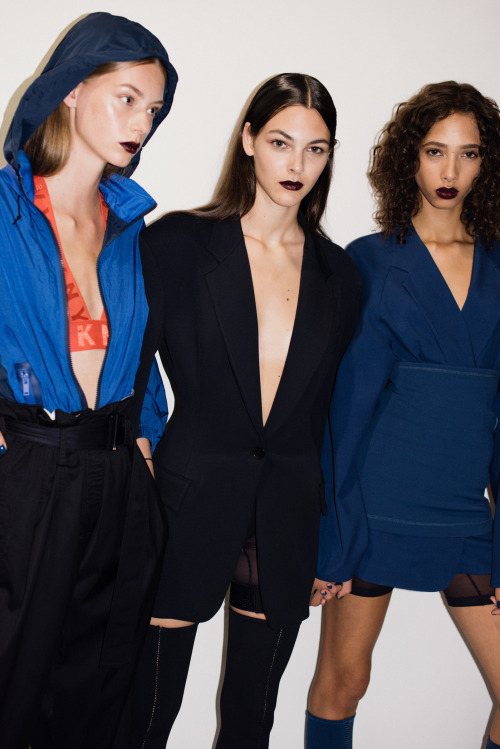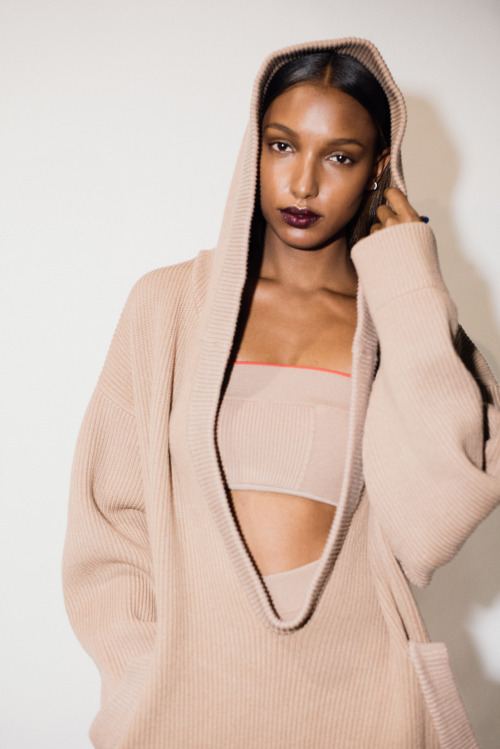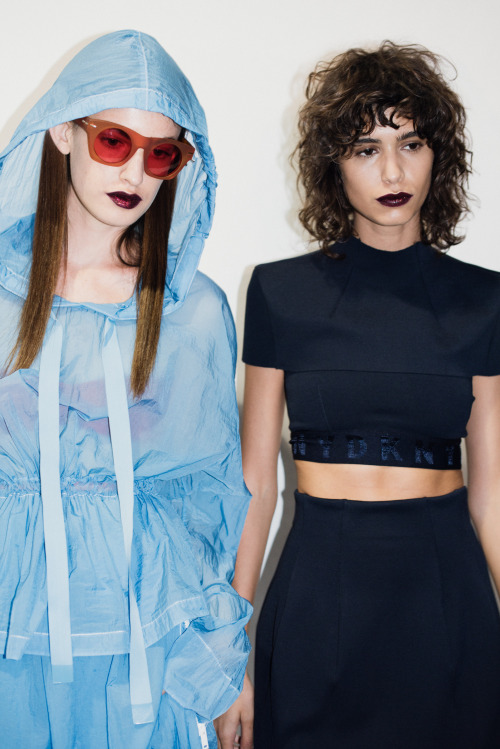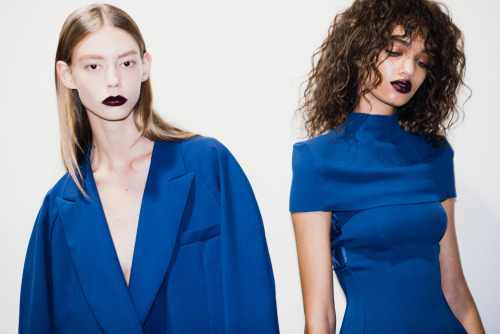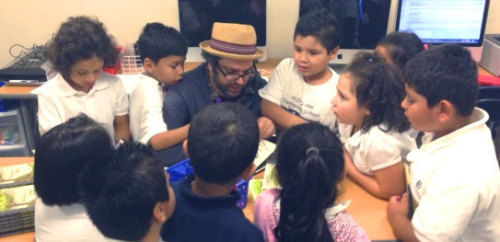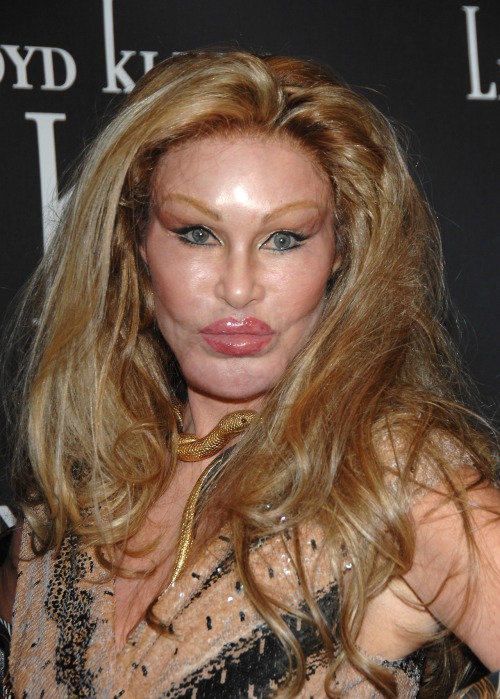#public school
Oh man the Jr high middle school thing. Let me tell you.
So basically they are kind of the same thing but kind of…not?
So it used to be that kindergarten through sixth grade was elementary school, then 7th and 8th grade was Jr High, then 9th-12th grade was high school.
Then they were like “Hey let’s change this for no real reason” and they in some places made kindergarten - 5th elementary, then 6-8 Middle School, then 9-12 high school.
Some places looked at that and laughed and went, “Nah” and kept on Junior High-ing.
I was one of the really unlucky kids who was in 5th grade when Jr High was still a thing (so not quite to the “top” rung of the Elementary school ladder yet but so close I could taste it) then suddenly the next year: no, it’s middle school now, you’re AT THE BOTTOM of the pile, the sixlettes (that’s what they called us at my school), the baby middle schoolers, with three long years ahead of you until you reached the top (8th grade). We were ROBBED.
As for the rest of the stuff, yeah, wavy hands, basically what everyone else said. Logical, nah.
GPA stands for “Grade Point Average” and classes are “weighted” to a certain level of points. Taking advanced classes (AP = Advanced Placement) that gave you college credit weighted your GPA up to 5. So I graduated high school with a 5.0, when some places that didn’t offer AP classes had a top possible GPA of 4.0, which demonstrated to me how utterly pointless the GPA system really was.
I graduated college (which had a max GPA of 4.0) with a 3.87, which was really good, but I felt bad because it was so far away from 5, even though I knew 5 wasn’t possible, and yeah. Pointless.
OH, SPANISH! It was Spanish, I took Spanish I junior year and Spanish II senior year.
Yes, ours are typically in the same timeslots every time. Now, some schools have a “block schedule” where class periods are slightly longer and you have some classs that you do Monday-Wednesday-Friday and some Tuesday-Thursday (if that’s wrong, someone tell me, I’ve never attended or taught at a block schedule school), but in a typical school, you have 6-8 periods a day and each class is always in the same period. My highschool schedule off the top of my head my senior year was
- 1st period: Band
- 2nd period: independent study (I took college level personal finance online in the school library)
- 3rd period: College Algebra
- 4th period: Composition (my english class that year, it was basically all types of writing, creative, essay, etc.)
- 5th period: PE (physical education, aka gym class)
- 6th period: (I’m gonna be honest, I don’t remember, I was done with both our science and our social studies requirements senior year, and the other classes I remember doing like mass media or being on the yearbook staff weren’t that year, so I have no idea what I took this period my senior year)
- 7th period: Creative Communications (aka drama, it was taught by our english teacher and we called it that so that it would count as something she was certified to teach, I think)
And that never changed, it was consistent the whole year.
oh this is really helpful!! thank you!
and i worded that second part very ambiguously, but what i’ve been getting is that you have the same classes in the morning and afternoon every day?? for me, my classes are in the same order, but they rotate, so one day i’ll have it last period, then second to last, etc etc. that said, i do have to check my timetable for literally every class because i can never remember what i have next
Junior high and middle school are the exact same thing. That’s a very good question, but my school let’s us take advanced sciences at the same time after we’ve taken basic sciences. Another good question, I have no idea how our school system works lol. Most of us (at least in my area) stopped with the flag worship when we were in middle school and either talk or play on our phones when the adults try to get us to do it. GPAs are weird and somehow summarize our average grades, but they can actually go up to 5. 4 is the highest you can get for basic classes, 4.5 is the highest for honors, and 5 is the highest for college classes in high school.
The idea of the classes not being in order seems weird to me??? Like yeah its boring but I go to classes entirely on muscle memory if they changed throughout the week I guarantee I’d go to the classes on the wrong day
what do you mean the classes are in the exact same order every day?? how do you cope???
why is american school so confusing. what is the difference between middle school and junior high. why do you not learn your science subjects simultaneously. why does the length of time you spend in elementary school differ. why do you have to stay in school until you’re 18 in some places. why do you worship your flag every day. what is a gpa and why does it only go up to 4. what goes on over there, guys?
Okay, so my school system was… something, apparently.
So, when I was growing up, we had elementary school, but it only went from kindergarten to 2nd grade. Then I went to Intermediate school, which was a whole other place, that went from 3rd to 5th grade. I went to middle school/ junior high from 6th to 8th and your basic freshman-senior/9th to 12th grade in high school.
But! It didn’t end there! See, when I was about the go into my freshman year, two big events happened: one, our school system split from our county’s school system to make our own, and two, the city next to us had finally built their own high school, meaning that their high school students didn’t have to share our high school with us.
So my freshman year had an weird schedule of having 7 periods as normal Monday-Wednesday, then having the even classes on Thursday (while getting off from school an hour early!) and having the odd classes on Friday.
Sophomore onward had block scheduling of some form or another with 8 periods instead of 7, usually with having odd classes on Monday and Wednesday, even classes on Tuesday and Thursday, and having all classes on Friday…
Except that Monday through Thursday we also had something called a ‘skinny’ period (this thing basically replaced our homeroom) that happened after our first period of the day, lasted only fifty minutes compared to the almost hour and a half of the other classes, and we didn’t have that skinny period on Friday at all!
It’s confusing now to think back on it, but being in the middle of it felt natural. As high school progressed, they ended up making another elementary school, moved the kids out of the one I used to go to, and have kindergarten through 5th grade in two buildings at the same time.
I will say with all the craziness that was those schedules, I lucked out twice: first time when I was a sophomore and somehow managed to get into a Crafts skinny period that had nothing but seniors in it. Second time was senior year because I got Art II for my lunch period, which was closer to two-two and a half hours to cover lunch for everybody. I still don’t forgive my band director for forcing our skinny period senior year to go back to the band room and practice and not making it a choice >:(
GPA was stupid, but my grades got me in the top fifty in my grade, so I guess that was something.
Oh yeah! And we still pledged the flag through high school, and a lot of folks still did it. But at least if you sit there quietly, no one would say anything bad to you about it.

Hoover Elementary School, Burlingame, CA. Image online.
Gov’t Can’t, Kids Can!(circa 1945)
Kids rescue abandoned gov’t project, ask President Hoover for support.
Learn how kids at Hoover Elementary School cut through red tape in Lynn Smith’s Hoover Heads blog:Lou Henry Hoover Amphitheater.
“[W]e raised the necessary funds ourselves by movies, dances, hot dog, candy, and ice cream sales.”
Founded in Burlingame CA in 1932, Hoover Elementary was selected for a Works Progress Administration (WPA) project in 1937 to build an amphitheater behind the school. Like many construction projects, it stopped mid-way. Terraces were built for seating, but that’s it. Weeds took over the unfinished project and filled in the seats.
Student takeover! (of the project…)
Frustrated by the lack of progress, students stepped up to take over the neglected space. On May 12, 1945, Hoover student Virginia Burns wrote to President on behalf of the 7th grade class and what they had done:
- cleared the weeds
- built a larger stage
- used existing terraces to construct seating for 500
She shared a fundraising update: “we raised the necessary funds ourselves by movies, dances, hot dog, candy, and ice cream sales.”
What was Hoover’s connection to Burlingame, CA?
Burlingame is about 20 miles north of Palo Alto, where Herbert and Lou Henry Hoover lived for many decades.
Initial outreach: students’ first “ask”
By the time Virginia wrote to Hoover, their project was nearly complete. Only one thing was missing, a name for the new amphitheater. Virginia asked for his permission to name it the “Lou Henry Hoover Amphitheater.“ President Hoover responded: “Of course you can.” He said he was moved by their idea and that “it is doubly touching because of the hard work and zeal which created it.”
Second outreach and "ask”:
Virginia again wrote to Hoover (9/29/1945), now on behalf of her 8th-grade class, inviting him to dedicate the Lou Henry Hoover Amphitheater. President Hoover was unable to attend, but asked Lou Hoover’s longtime secretary, Dare Stark McMullin to attend and speak. Other event VIPs included the Mayor of Burlingame, the school Superintendent, and opera singer Alexandra Kovaleff.
Dare McMullin updated Hoover about the festivities: “It was all a darling event, the Lady would have loved it.” President Hoover personally closed the loop with Virginia Burns, writing to congratulate her for “a job well done.”
Quick update:
Due to declining enrollment, Hoover Elementary closed in 1979 and the building was sold. Thanks to a baby boom, the school was needed again in 2010. The school district purchased back the school, renovated it, and reopened the historic building to students in 2016.

Hoover Elementary School today, image online.
See also: First Lady Lou Hoover’s OdetoSpring!
First Lady Lou Hoover welcomed spring with this poem, shared by archivist Matthew Schaefer in his Hoover Heads post, Lou Hoover ‘Spring’s Coming.’
Excerpts:
Flower carpets, green slopes, meadowlarks’ trills. Spring in California! It is coming. We begin to prepare, in fancy, for the inevitable outings, when the call to adventure gets beyond control.
Afoot. Ahorse. En auto. We yield to the invitation of them all. Even when we say, ‘the motor goes too fast; it misses the charm of the wayside; we can’t tell what flowers they are, only their color.’ Even then, we more often take the auto, because it gets us farther afield in less time…
Now it is green promise. Promise strengthened by a few gay poppy and mustard blooms on hardy year-old wayside plants, as one drives up Salinas valley. The Salinas valley, beautiful on a windless day, a soft hazy day, making the most lovely pastels of broad river flats, of almost leafless willows and poplars, of too closely cropped hillsides, and of blue mystic opalescent mountain distances.
London Collections: MEN
As we’re approaching to the womenswear collections fashion weeks, Men are showing throughout Europe, and the male parade started in the city where, more than anywhere else, menswear was born: London. London Collections is becoming more and more important in the fashion business for its ability to reunite promising designers with innovative ideas in a sector of the business which has always been seen as conservative. I don’t think the mens market has reached its full potential, but I agree on the fact we’ve seen many good ideas during this first menswear fashion week, coming from both established names and newbies. In general, black was (of course) the key colour - always present in every man’s wardrobe - and the inspirations came from different areas: of course 70s, which we so much saw during the womenswear Spring collections in September/October - so much that I’m going to throw up if I see another pair of bell-bottoms or hippy inspired looks - but thank god it was much softer and defused for man; the military inspiration, often the starting point for new ideas in mens fashion; gender crossing.
Day 1
Topman Design had the pleasure - or is it bad luck? - to show as the very first brand at London Collections, but it was a good opening in perfect Topshop style: great variety, not vey far from what the market offers - it’s a high-end brand anyway after all - going 70s swiftly transitioning from ethnic to urban style. I personally loved the return of the three-button jacket, disappeared from the catwalks - except for some scattered references - for years.
London was also the place where the finale of the International Woolmark Prize took place; Public School took the award for its innovative use of wool and originality in design - basically this is always the reason given for the awards by the juries.
Coach delivered a collection for a very cold winter, where coats and windbreakers were the centerpieces. Leather and sheepskin as king materials also for trousers and shoes. Different kinds of leather were also mixed with printed textiles in leopard or with extremely soft-looking jersey. Alex Mullins brought to the table another interesting collection for its androgynous atmosphere, with trousers which I would define as EXTRA LARGE - and I’m not talking about the size -, A-line silhouettes - for men, yes! - translated into bell-bottoms taken to their extreme, and shapes extremely developed in length. Velvet gave every look an old-fashioned vibe which was fascinating and made the collection look like coming from another era.
For the event MAN, in collab with Topman and Fashion East, three designers showed their collections this season, and I was particularly happy with Nicomede Talavera’s work (photo 1). The looks were made of layers of different outfits, representing a perfect armour for the urban boy of today, and every piece had an Oriental quality to their cut which was interestingly melted with a vague reference to hip-hop street style.
Christopher Shannon (photo 2) had an attention-grabbing collection as well, which I would definitely compare, in art, to Malevic’s suprematism, with the insertion of colourful geometrical shapes showing a great deal of research on the subject to reach, just like the Russian artist, purity of form. The fabrics were borrowed from activewear, with hi-tech materials and the overall impression was that of a strong reference to recycling - what about the plastic bags onto the models’ heads?
Todd Lynn developed the idea of eliminating the distinction between male and female wardrobe - as you can see if you look at the whole line, there was basically no difference between the two, and even the models as of styling, face, hair etc. looked exactly the same. The colour palette was essential, made of black, grey, white and some sparkle of mustard yellow - which I greatly appreciated - and there was in every look an essentiality which brings you back to the 60s, with that touch of optical effect characterising that decade.
Day 2
Lee Roach (photo 3) presented the kimono in a new light which I hadn’t considered before: that of tender manliness. Yes, it can sound like an oxymoron - that is actually - but this is the reason why it’s all so fascinating, and it perfectly suited the essential minimalism of pieces like the top made of one single patch of fabric in raw cut.
Patchwork was a very big team this season - as we’re going to see in a few lines as well - and Maharishi chose to collage different types of quilted fabric to create its windbreakers in the green tones of the camouflage. Astrid Andersen (photo 4) was possibly one of the most interesting collections shown in London, because the designer managed in an extremely difficult task: make hip-hop culture look polished. The palette was basic, with black being the focus, the materials were hi-tech and had a shine which made them look rich, but there was also suede, which brought you a step higher than the usual blingy style of street fashion.
Shaun Samson reminded me of firemen uniforms - well, after all, most of the models were basically half naked wearing bermudas and Timberland-like boots. I appreciated the interesting take on the checked flannel woodman shirt - it seems he took inspiration from every sexual cliché about men at work - which was delivered in different new versions, even as chemisier - for man.
Fashion East was again held during London Collections, and this time I absolutely loved loved loved the mini collection delivered by Grace Wales Bonner if not for the clothes in itself - which were interesting and new in their ‘oldness’ - at least for the inspiration, which seemed to me coming from a melting pot of elements I’ve never seen well-represented in fashion, at least not all together: 70s - black - homosexual. Loved the high waist trousers and the African contamination - fringes which made me think of Morocco - in a urban version.
Agi & Sam seemed to merge art history all in one single collection: there was a little bit of Picasso, a little bit of Kandinskij, even a little bit of Mondrian, and yet, even if the colours were so beautiful and made me think of contemporary art in such a strong way, still I thought their brightness distracted from the overall look - that’s why my favourite part was the total black outfits.
Hardy Amies (photo 6) proved there’s always market for classic-looking but young and fresh looks. Everything was magical in its perfection and the prints, the cool palette of yellows (lemon) and blues (electric) made everything lighter and youth-appealing.
If there was a collection I’ve heard about during this menswear fashion week, it was Sibling’s. After pink has been introduced and accepted, as a colour, in the male wardrobe - for several years - now, after Jeremy Scott for Moschino brought Barbie to the catwalk for S/S 2015, Sibling’s designers decided it was time to put her male counterpart - Ken - under the limelight. Everything was shocking pink in the most 'Schiaparelli’ sense of the term, and the male models were even accompanied by stuffed animals and teddy bears during their walk. The collection in general sort of made me smile more than everything else. I didn’t like the faux fur pieces, while the strongest ones were, in my opinion, the knitted outfits.
Day 3
J. W. Anderson (photo 7) is an ever-rising star of fashion heaven, and even if it brought to the runway the usual, so-often-seen-that-I’m-going-to-throw-up 70s style, he did it in such an interesting way that you can’t but love it. There was a curious mix between menswear and womenswear, using the same shapes, the same fabrics (cowhide, leather), same giant buttons - made of what looks like mother of pearl - but also bustier shapes in men’s pullovers and other jerseys, bicoloured, inspired by cowboy shirts.
Margaret Howell really made me think of Armani - or better, a sort of English twin of Mr Armani - for her polished quality and the classic evergreen look of the outfits. Joseph (photo 8) proposed oversize proportions, knitwear basically everywhere - have you seen the total knit look in the photo? - and ethnic patchwork.
James Long decided to take over a challenge long faced by the fashion world: making jeans couture. He tried with insertion of lace but also by tearing the fabric apart, which instead of reading cheap and predictable, gave the looks an air of rich decadence.
And then, there it was: Moschino. It’s like that very moment I wait for during fashion weeks - especially after Jeremy Scott took the helm of the creative process. Yet, apart from the snowy mountain setting, which immediately conveyed the idea Scott wanted to communicate - yes, winter, cold, fur, warm clothes, bla bla bla - the patchwork pieces - I told you collage was big this season - and tartan prints - the most successful part of the collection IMHO - I wasn’t exactly mesmerised by the overall collection. Guess I’ll have to wait until womenswear fashion week in Milan to be shocked again by the mythological figures brought to life by Mr Scott.
In fashion weeks, there are always those brands, know by very few people, who deliver very little collections which are usually noticed by basically nobody, and Kilgour was one of them, but thank god, I noticed. There were something like eight, even less, looks, but the detailing was so precise and interesting, which I couldn’t help deciding to talk about it in my blog. The same innovative, new lines were repeated in the cut of jackets, shirts and coats, showing that you don’t need to change very big things in order to convey fresh ideas.
Alexander McQueen’s Sarah Burton (photo 9) was very smart in taking inspiration from a very actual topic, making the red poppy a constant decorative motive in this collection after the Tower of London was covered in poppies to remember the 100th anniversary of World War I. Apart from the blood red of the flowers, the outfits were total black, with some hint of military green. And military was also the inspiration - it linked to WWI after all - behind the coats - I absolutely loved the bright blue trenchcoat.
To finish the day, KTZ’s inspiration was not an easy one to digest, but it was definitely strong: violence, Clockwork Orange, dystopian views of the world were the elements of their collection, which even if efficiently delivered, were not cohesive enough.
Day 4
Paul Smith was possibly the smartest designer of them all, showing that even after many years in the fashion industry you can still come up with amazing ideas. It was not a collection: he just presented one single simple classic suit. A black suit. The stroke of genius was another, summed up by the name of the 'event’: A suit to travel in. In a performance between theatre and circus, some models all dressed with the same classic suit showed how you could basically do anything - from walking to dancing acrobatic rock - and still have a perfectly polished and not wrinkled classic black suit. Craig Green (photo 10) is one of the new names in fashion which are going to have a fantastic career, and you could see it immediately after just few collections. Yes, the colour palette was one of the most classic (black, white, red) but the outfits were an explosion of creativity: some of them look like being inspired by parachutes - ever thought parachutes could be cool? - as well as bulletproof vests in unexpected cuts. Liked the long-sleeved t-shirts with pulled strings in front.
Katie Eary was all about three-dimensional prints and knitwear in awesome colours - I particularly loved the detail of the strings in the trousers croach - while Burberry Prorsum went for 70s coming up with a nice wearable collection - and yes, this time wearable goes very close to meaning 'boring’.
Among the talents from Asia, this time my attention was caught by Xander Zhou, of whom I loved the manipulation of the denim as well as the optical effects given by the fur applied over the coats looking like cowhide and the geometrical patterns of the leather decorating the last looks.
Stay tuned now for John Galliano’s return with Maison Margiela and the rest of menswear fashion weeks: Pitti Uomo, Milan, Paris.
xxx
Post link
Grace Mahary, Xiao Wen Ju, Yumi Lambert, Taylor Hill, Kasia Jujeczka, Julia Hafstrom, Mona Matsuoka, Jessica Stam, Amanda Murphy (CLOSED), and Astrid Holler walk Public School Fall 2015
Post link
Tax Tips When Sending Kids to Private or Public Schools
The decision to send your child to a public or private school is a personal choice. If you settle on private K-12 schooling, there are a few benefits that can help to reduce your federal tax liability and, in some states, your state tax as well. You’ll really see a tax benefit, though, when you send your child to college. Both private and public post-secondary educations come with some generous tax breaks for your family to help make education more affordable. To learn more, see the full TurboTax article.
Post link
Detrás de cámaras de la campaña de Public School, otoño invierno 2015.
Thinking about how school always makes you wake up early and I was always a night owl, perhaps ironically I’d have turned out smarter without school
TOON Books loves public schools!
This morning, Ricardo Siri Liniers is visiting two schools in the Miami Dade County Public School System! He’ll be meeting students, giving away free books, and encouraging young readers, artists, and writers to follow their dreams!
Post link
It’s such a hassle to find somewhere that teaches it which causes a lot of people to use websites that they can’t check the credibility for. It’s not even on Duolingo! I have a cousin who recently got a cochlear and I can’t do much then the basics. The only part of sign language that’s easy to find is the alphabet but spelling each word in a sentence to communicate is super hard and the word has to click in your brain. It’s like if instead of telling you a sentence I said “H” “O” “W” “S” “T” “H” “E” “W” “E” “A” “T” “H” “E” “R?” And you had to figure out what I said by combining the letters. This isn’t ideal and takes so much time. Let’s please try and get sign language in schools.
1. Hello
People here trying to make me feel bad about going to private schools my whole life from kindergarten to university because this is what my parents wanted for me and I am grateful for giving me the most precious thing in the world, that it’s education
lucky for me I can’t read this nonsense because us public school peasants are illiterate
I hate how people assume kids who went to private schools always got better education. I went to a high school of 50 kids which caused me to have bad options for extra curriculars and sports. Most of the time the kids didn’t even chose to go to a to a private school. Most of the kids at my school don’t even have the money to pay for it but get scholarships even if their grades aren’t good enough just because the school wants students. Don’t assume all of them are rich snobs a lot of the kids would rather be at a public school because they get better options. I have friends that prefer public school and some who prefer private school but most of the time the parents just choose for them. Kids get bullied by people who go to public schools for going to private schools as much as public school gets picked on from private schools.
Post link
So I’m going to public school for the first time ever (I’ve been homeschooled) and it is the farthest thing from Hogwarts ever and I’m sad…

adventures in apush (or weird things that my apush teacher has said or done in class)
not old hollywood related, but you can’t make this stuff up
- “some kid came up to me today and said, ‘hey, someone’s vaping in the bathroom!’. it isn’t my job to stop kids from vaping in the bathroom!”
- crumpled up an office call slip for a kid to leave class early and proceeded to throw away the slip, later he received a call from the office and stated that he didn’t receive a slip. when we told him what he had done he said, “sorry, guys, i must have blacked out while i was teaching”.
- [on nazis possibly using meth to make the wehrmacht more alert and aggressive] “so, meth is probably a good thing if you’re in the military.”
- “friday! vaping in the bathrooooom!”
- “you guys are all probably thinking, ‘what was in his soda at lunch?’.
- stopped his lecture and stared straight at me, motioning for me to tap the guy next to me that fell asleep and wouldn’t stop until i did it
- [to me after blowing my eardrums out because i sit next to the speaker] “let me know if the new speaker gets too loud, i don’t want to hurt your ears.”
- rickrolled the entire class with the new speaker on maximum volume
- “my kind of guy, a real man’s man, drinks scotch, smokes cigars.” ”we all know you don’t drink scotch or smoke cigars.” “you guys know what i do. i vape in the boy’s bathroom!”
- “it’s in my contract, i don’t know exactly what it states, but i signed it.”
- “it’s fall now and it’s finally raining, now when i go home i can put fuzzy socks on, sit by the fire with a cup of hot cocoa, listen to the rain, and get out my vape pen.”
- “you guys know i don’t actually vape, right? it’s clear to you all that it’s just a joke in this class?”
- “i have my arms shaved right now.”
- somehow manages to stare down each student multiple times a class period
- “we should all go for a run downtown really early in the morning and see if we can spot any methheads or mountain lions”
#BetsyDeVos for Education Secretary!
She has no certifications in education, nor work experience.
But she has spent a lot of time in schools, is wealthy, and she CARES!
#JocelynWildenstein for Surgeon General!
She has no certifications in medicine, nor work experience.
But she has spent a lot of time under the knife, is wealthy, and she CARES!
Post link
She has never worked in education. She has no certifications in education. She is not educated in EDUCATION! #BetsyDevos

Dear Public School: an open letter from an autistic student in the graduating class of 2020
Let me preface this by saying that in many ways, I suspect that my experience with public school was no different than many autistic students’ experiences in private schools, charter schools, and so on. That’s because ableism is pervasive in global society, and it affects every aspect of our lives. But here I have written my own experiences in public high school.
I can’t count the number of times I heard students use slurs such as r*tarded, the n-word, f*g, d*ke, etc. By far the most common slur used was r*tarded, which was often used within earshot of teachers who usually said nothing. Sometimes people would even use the words “sped” and “autistic” as insults, as if my educational accommodations and neurology were something to be weaponized to make others feel terrible about themselves. This common cocktail of slurs made me feel extremely unsafe.
Sometimes I spoke up about it, but most of the time I stayed quiet, because I just wanted to get through my day without having to argue with people about my humanity. Even students who were generally pretty socially aware and vocally supported LGBT people and people of color, often used the r-slur. And it hurt way more when I saw that type of behavior from those people, who I thought I could trust.
In my experience, ableism against autistic and other developmentally disabled people is probably the most prevalent form of dehumanization in the school system. It’s so ubiquitous that some people don’t even know what you’re talking about when you refer to the word r*tarded as “the r-word.” It’s so unquestioned that entire classes of people would laugh and crack jokes about autistic students who were having meltdowns that you could hear down the hallway.
I know, because I’ve been in those classes, and tried not to cry as everyone around me started laughing at another autistic person’s pain. It’s really hard to describe how humiliating that was. Because I’ve had meltdowns just like the ones other students were having, which means that my classmates might as well have been laughing and cracking jokes about me, in my most vulnerable moments.
One day at lunch, I overheard another autistic student talking to his aide about how his gym clothes had been thrown into the locker room toilet, and he had been shoved and choked by other boys as he tried to get his clothes out. His aide was aghast, and asked if this had been brought up to the administration. The student told her that he had talked to the office about these same students many times before, but it never seemed to change anything.
But these types of overt verbal and physical violence were not the only things autistic students had to face. We also had to deal with extreme levels of sensory overload, caused by events that were not planned without our needs in mind. Even if prom hadn’t been canceled this year due to coronavirus, I still wouldn’t have been able to go. The music would have been too loud and overwhelming, even with earplugs. I nearly cried at way too many pep rallies to count, from the bone-shattering vibrations of speakers blaring “upbeat” music, combined with hundreds of shrieking, shouting students. It’s absolutely horrible to have to endure severe physical pain just to be socially included. I spent most of my time at pep rallies plugging my ears with my hands.
My public school did a pretty terrible job at educating students about autism and other disabilities. Autism was only brought up once in a blue moon, and when it did get brought up, it was framed as if it’s some sort of disease that requires “awareness” and a “cure.” The problem was that barely anyone really understood what autism is, teachers included. On the very rare occasions that it was brought up, I was usually the only autistic person in a class full of people talking about it, and I had to correct both students and teachers on certain fundamental facts.
Despite the creation of an “Autism Awareness Week” my freshman year, which was obviously organized by non-autistic people (as evidenced by the plastering of puzzle pieces all over people’s lockers, and the “facts” from Autism Speaks that were read over the loudspeaker), the bullying and abuse didn’t stop. Many of the same people who purchased the blue “autism awareness” ribbons the school sold that week and stuck them on their backpacks, also frequently said the r-slur and made fun of autistic students for having meltdowns or acting in unconventional ways. That’s because “awareness” without acceptance accomplishes absolutely nothing.
If public schools really want to do right by autistic students, they can start by getting information from the Autistic Self Advocacy Network, not Autism Speaks. Then, districts can teach students about how autistic people perceive the world, and encourage autistic students to give talks and educate their classmates about their experiences. Humanizing those who are different, and inviting students to explore radically different ways of perceiving the world, is honestly what education should be about.
Schools need to commit themselves to active inclusion, which means taking down barriers to access like excessively loud music at events. Autistic students shouldn’t have to ask our schools to accommodate our sensory needs. That should be something that is granted with no questions asked.I assure you that no neurotypical student actually needs the music at school events to be so loud that it will damage their eardrums. Yet, for some strange reason, neurotypical preferences tend to override autistic needs. That has to change.
No person should have to go through the routine, systematic humiliation and exclusion that I did as a student. And my experience in high school wasn’t nearly as bad as many other autistic people’s. Other autistic students got severely bullied, even physically assaulted. There is only one word to describe all of this:
Unacceptable.
Sincerely,
Eden S.
Shout out to the kids like me who had good grades in k-3rd and suddenly became an “underachiever” and suffered from that point on with an inferiority problem and never quite learned to live up to their true potential
6yo’s school: controls every facet of student pickup, including issuing car rider numbers, you can’t change how you pick your kid up after 2pm and must do so in person or by fax if you don’t send a note in their backpack that day, and parents who pick up walkers can’t actually come on campus to meet them — we wait on the street behind the school for a 3-teacher escort, and they make sure kids go with the right guardians
Also 6yo’s school: thought my kid was staying for a club he’s never gone to before, I have no idea why, and kept him late, even though we never sent a note or a fax or came in person; didn’t call me until 10 minutes after school let out, just as the walkers were arriving and he wasn’t one of them ♀️



So I came across this page on the homeschool debate http://www.debate.org/opinions/is-homeschooling-beneficial-for-children
Asking the question if you thought homeschooling was beneficial for children. I seen a few good comments from the “yes” crowd, and a lot of good answers from the “no” crowd.
However, this shit cracks me up. A person who is pro-homeschooling says:
Better Education, Socialism, and Fun
Homeschooling is beneficial because kids have better learning experience, can decide what they want to learn, and get possibly even MORE social. Now I can almost hear all those people screaming at their laptops or PCs or Macs or whatever, but before you start posting a bunch of disagreeing comments on my post, consider this: Homeschooling allows students to participate in fun and sometimes educational clubs that they could not do in public school. Sitting in a lecture for 7 hours a day is not socialism. Clubs, fun and Friends are.
“Sitting in a lecture for 7 hours a day is not socialism” well it sure as fuck ain’t capitalism LMAO.
I think we got our answer, homeschooling is bad LMAO.
I know, I know, I’m horrible.
Oh and for those of you that found this post googling for information on homeschooling, let me just give you my opinion:
Public school is a great place to send your kid to sit down all day, talking in class half the time, constantly getting in trouble for it, and then get physically and verbally bullied by fellow students. It’s a place for your daughter to meet the man that will knock her up before college, and for your son to get a sexual harassment charge, maybe even have to register as a sex offender, all for saying something inappropriate to or about a girl. You can rest easy in the comfort that your child is being babysat by liberal tyrants that are only there for the money and the pushing of liberal white-guilt male-guilt straight-guilt cis-guilt and whatever other cultural marxist type of guilt. And know that your child, after graduation, is not qualified for anything outside of cashier work. It requires college or trade school to actually be qualified for something. And realize when it’s your daughter going to college, it will be the liberal arts she takes, which will waste your money, her money, and never end up being of any use in the working world, and she will then blame patriarchy for male dominated fields, rather than women’s insistence in having useless liberal arts degrees.
Private school is a really expensive version of public school, only with more gay rights, and trans rights hippie dippy communist crap forced onto your already white-guilted child.
Homeschool is really great if you want your kids to have no friends and no social life and be socially awkward for life, and to use the bible as a science book, and use the bible as a history book, and use the bible as an English book and… you see a pattern developing here?
Homeschool is really the choice for dangerous religious fanatics, white nationalists, and gun collecting survivalist hunkered down in their bomb shelters listening to Alex Jones (often all of these things over lap).
So yeah, public school is the lesser of the 3 evils.

